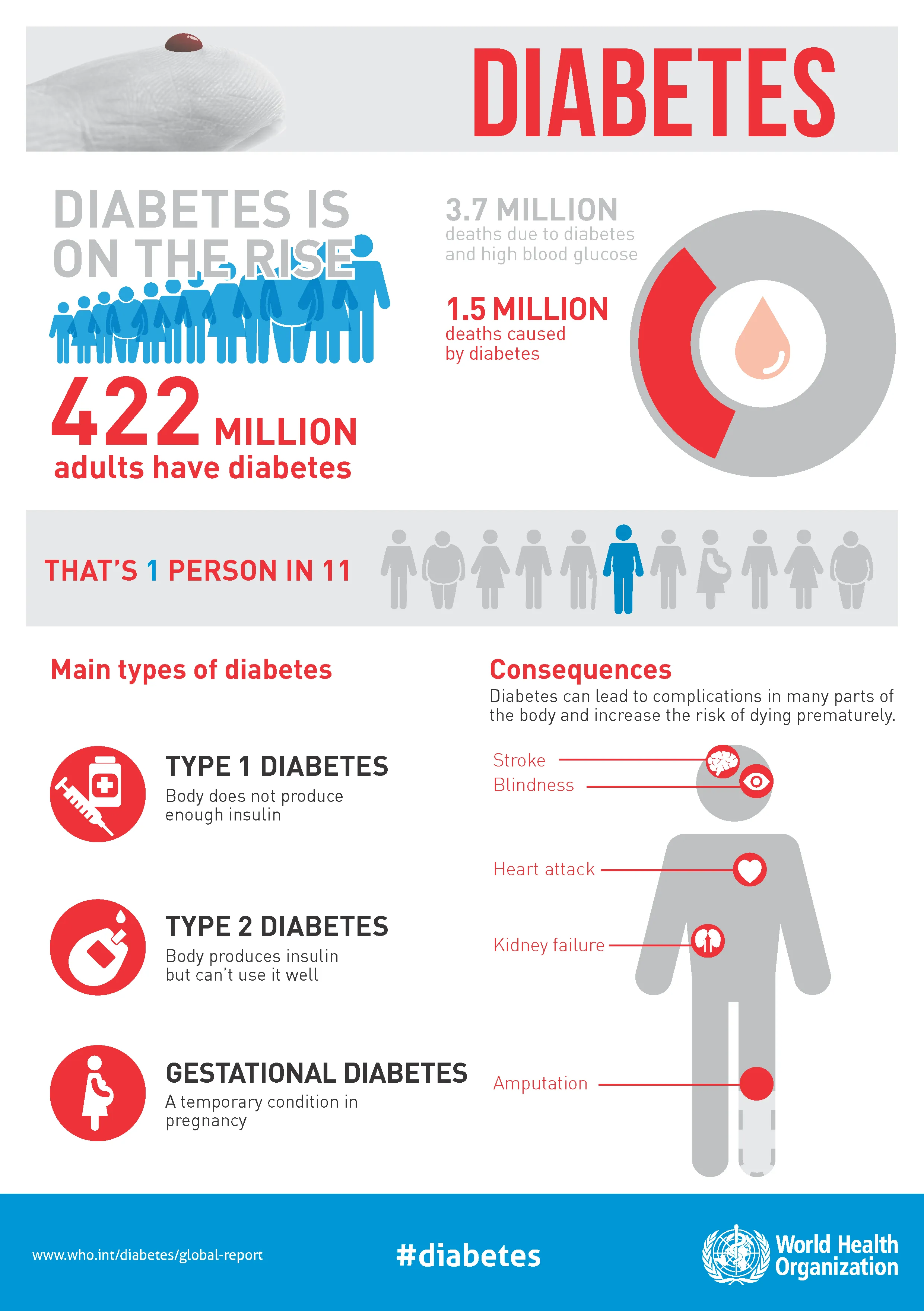In 2018, Nam Han Cho, then president of the International Diabetes Federation (IDF, of its acronym in English), referred to the epidemic of this disease as "World War II", comparing the million and a half of the dead annual dead thanIt causes those fallen in a war.The hyperbole shows the despair of some experts in the face of the relentless progress of the disease and the difficulty in raising awareness of the society of its magnitude.Today, The Lancet medical magazine publishes a series of articles in which he calls attention to the threat of diabetes, which, they raise, does not face the right tools.
According to estimates published in the magazine, in 2050 there will be around 1.3 billion people living with diabetes worldwide, an increase that multiplies by more than two the 529 million affected today.90% will be people with type 2 diabetes, a disease associated with obesity, diet, alcohol or tobacco and lack of physical activity, and that is closely related to poverty.In the US, diabetes is 1.5 times more frequent among minorities such as blacks or American indigenous people, a problem that the authors of The Lancet articles attribute, among other things, structural racism.
In an editorial that is also published today, the magazine warns of the erroneous approach that many apply to diabetes.Despite the success of new drugs against ailment, which also help reduce obesity, “the solution to insane and unfair societies are no more pills, but re -evaluate and reimagine our lives to provide opportunities that address racism and justice and act onThe social factors of the disease, ”they say by citing the doctor Rupa Marya and the economist Raj Patel.The drug market against diabetes will grow, according to some estimates, up to 100,000 million dollars in the next decade and could reach a figure 10 times higher in 2045. However, as with many other evils, which are more treatable withHealthy habits applied in time than with drugs when it is almost late, the effort in advance of diabetes does not receive the necessary attention.In 2018, the countries of the European Union used, on average, 2.8% of their health expenditure in prevention.
More information
Six years of war in Syria have changed the lives of millions of people.Health services such as family planning, mental health care or chronic sick treatments have been set aside because medical staff has had to focus on saving lives.In the photograph, a nurse performs a diabetes analysis of a patient in one of the MSF centers in Al Bab.Diabetes: The epidemic that can crush us because it does not excite
For a long time, experts affect the need to include poverty as a fundamental factor to fight to improve health.The Lancet's attention call estimates that by 2045, up to three out of four adults with diabetes in the world will live in middle or low income countries.Today, only about 10% of people who suffer from the disease in these places receive adequate treatment.The growth of the load that diabetes supposes, however, is not only seen in those countries with fewer resources.In the US, the prevalence of the disease has multiplied almost by two among young people, increasingly exposed to all types of foods that increase the risk of obesity and a more sedentary life.As with all diseases in all parts of the world, those who suffer the most of the increase in the main world power are the poor, which are, most frequently, black or native Americans.
With current trends, no country is not expected to reduce its percentagesof diabetics and there will be regions such as North Africa or the Middle East in which rates will reach 20%.“Diabetes remains one of the greatest threats to the public health of our time and will grow rapidly during the next three decades in all countries, without age or sex difference, raising an important challenge for health systems of the entireWorld, ”says Shivani Agawal, from the Albert Einstein School of Medicine, in New York (USA).Agarwal, who has led this series of articles, affirms that “focusing on understanding diabetes inequality is vital to achieve the UN Sustainable Development Goals, which want to reduce noncommunicable diseases [such as cancer or diabetes] in30% in less than seven years and reduce the growing negative effects on the health of marginalized populations and on the strength of national economies in the coming decades, ”he adds.
In the series, success cases are mentioned in supporting communities with less resources, such as some countries of the Sub -Saharan Africa, where the cooperation of governments, industry and patient associations has allowed to facilitate access to insulin and other health products withMeasured reductions of the impact of the disease.




